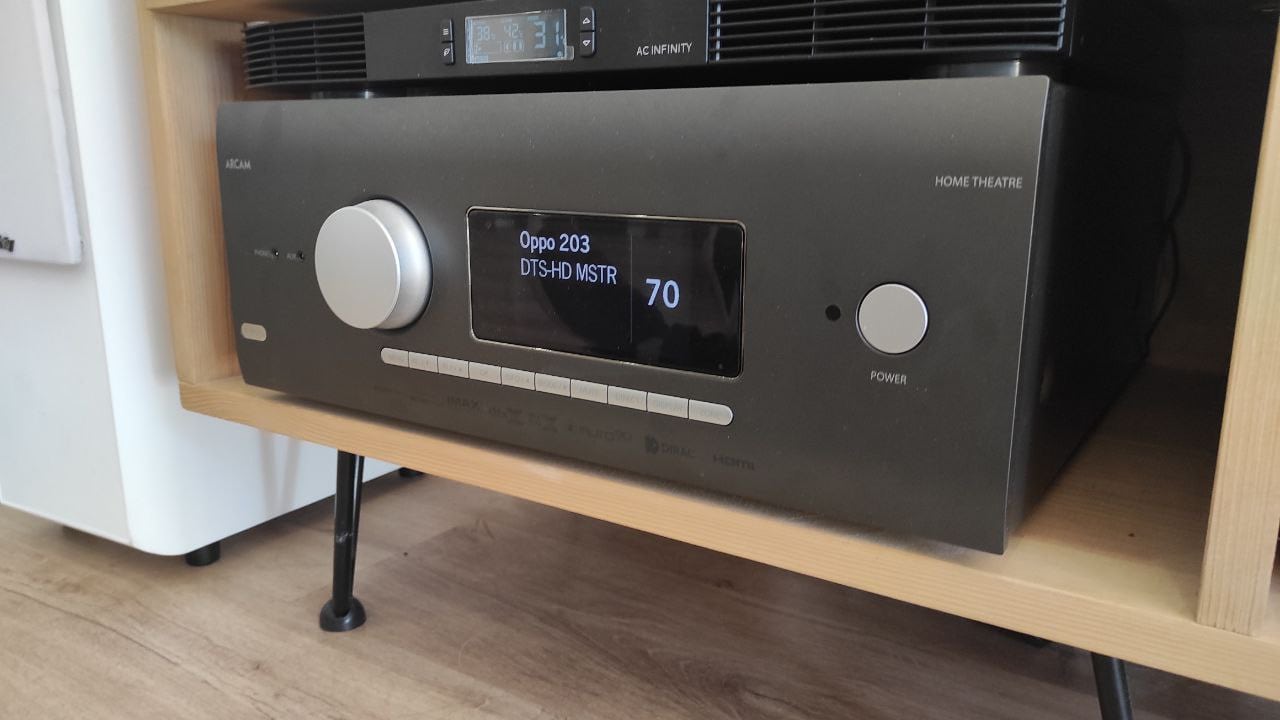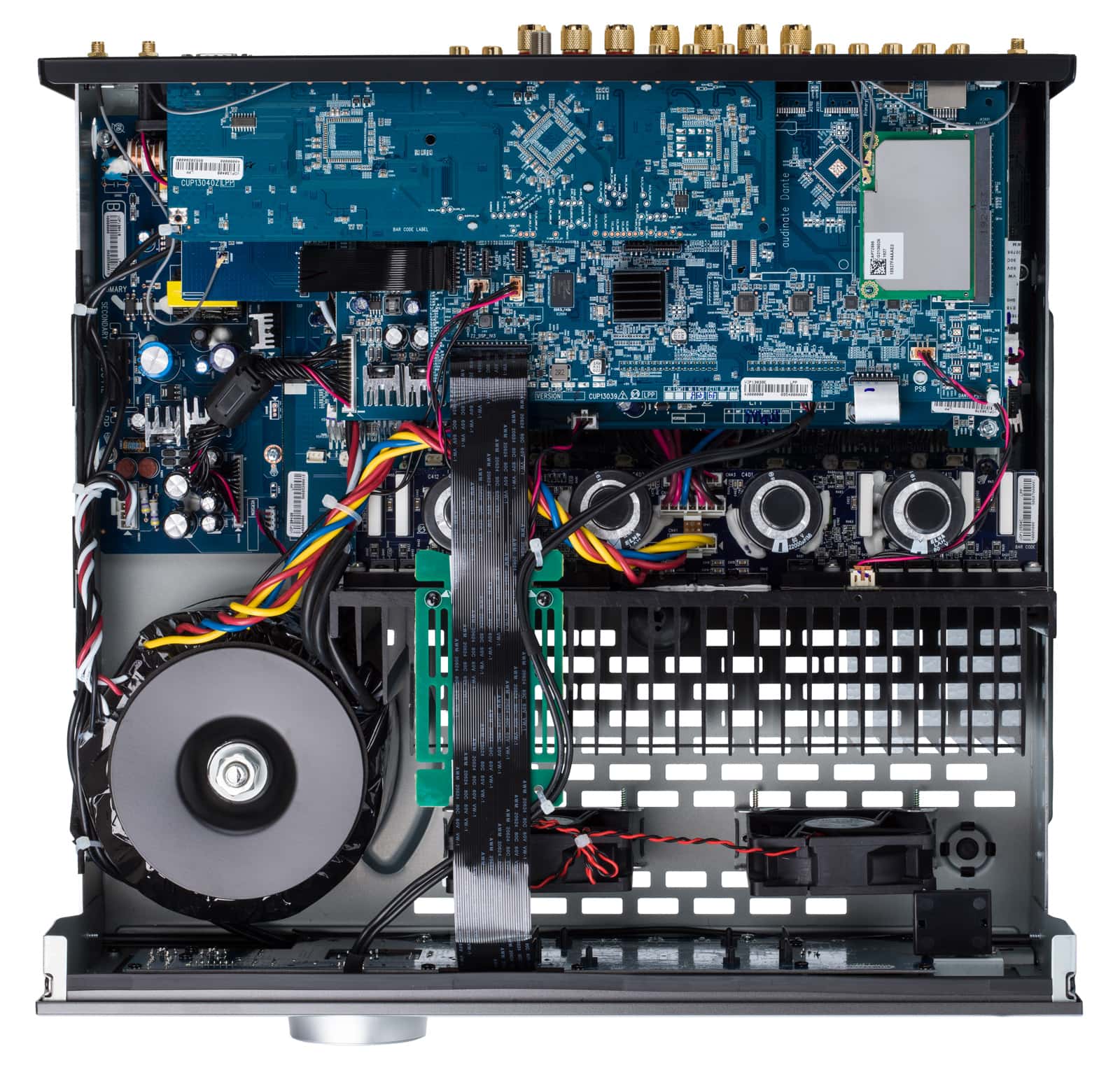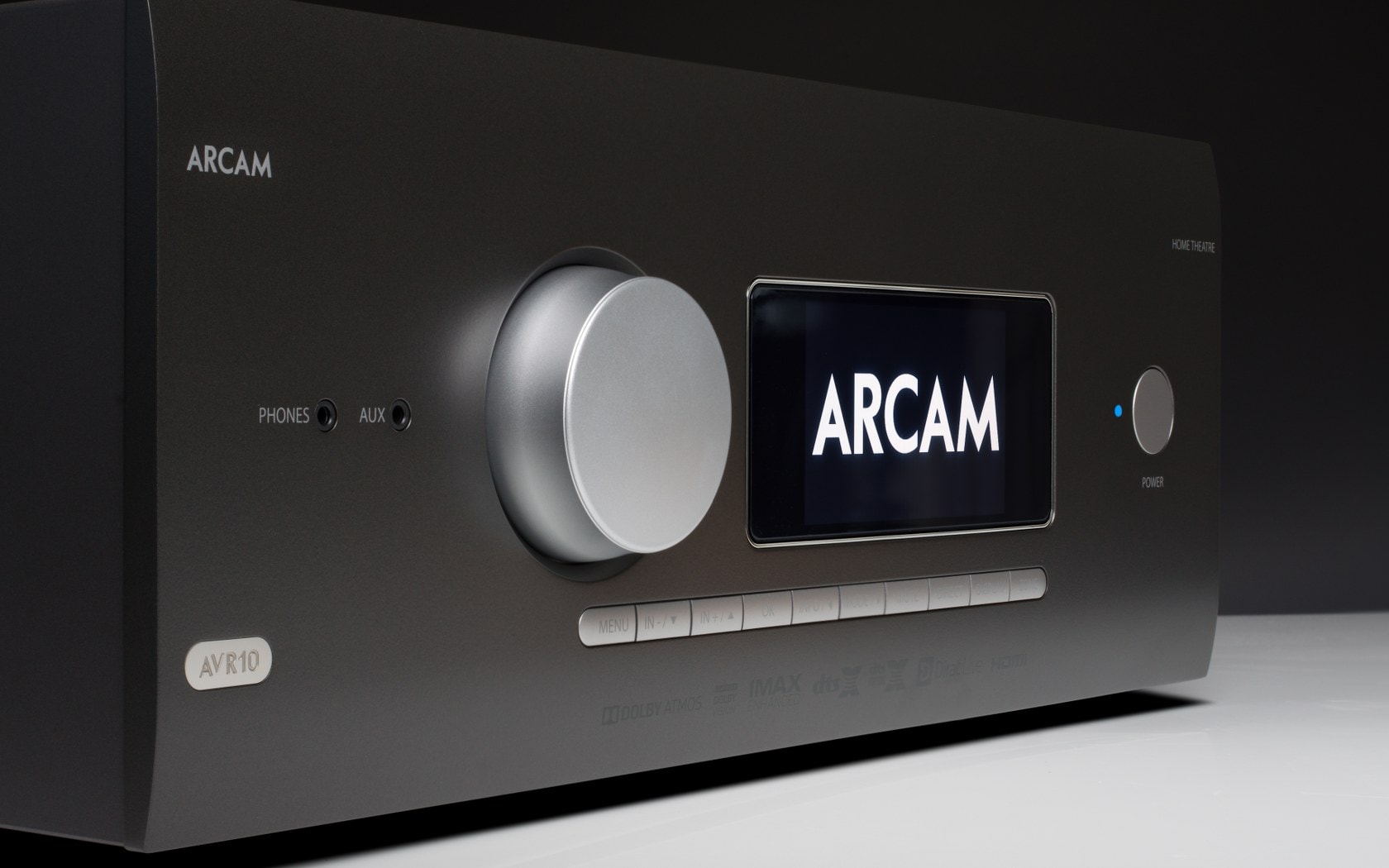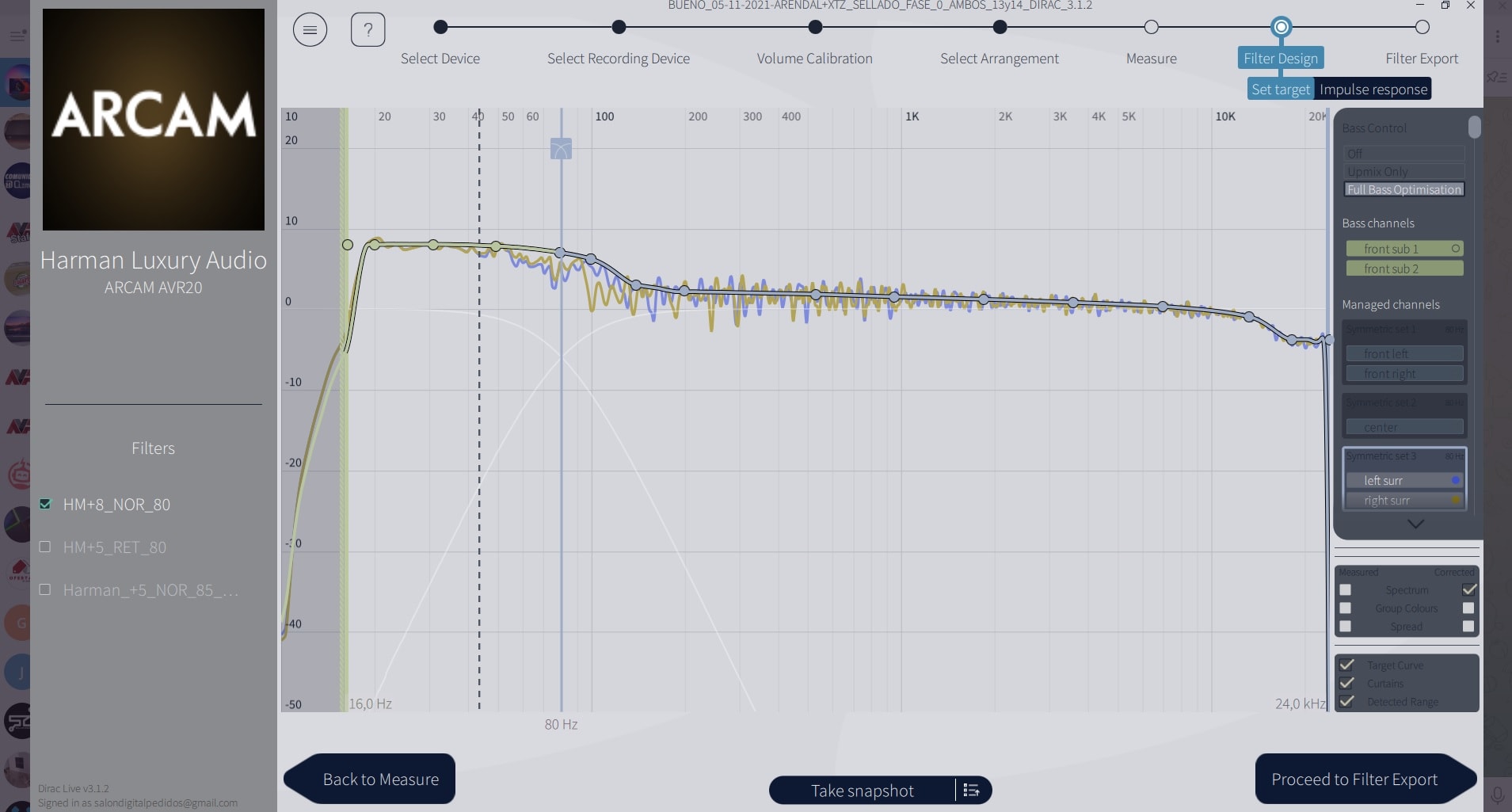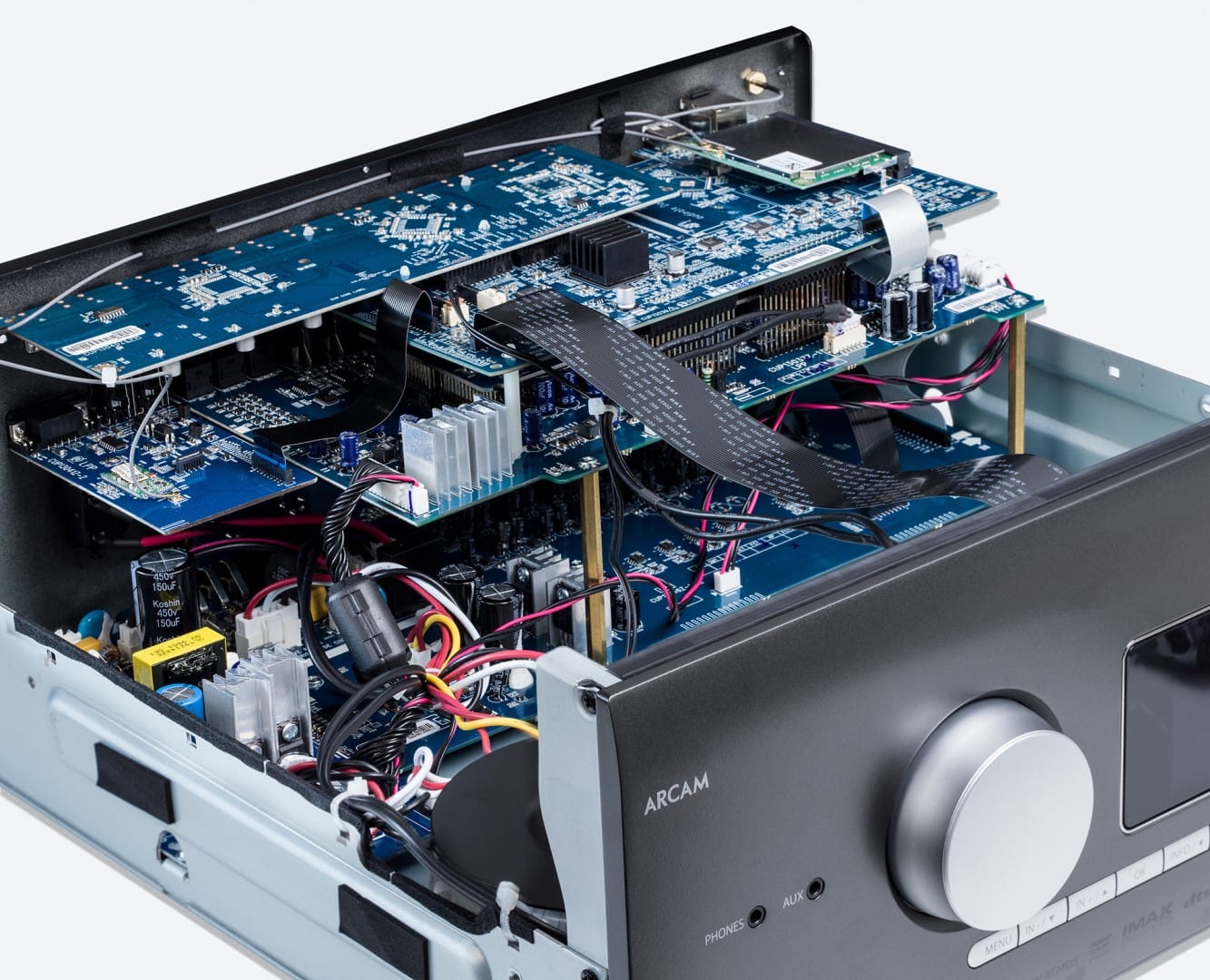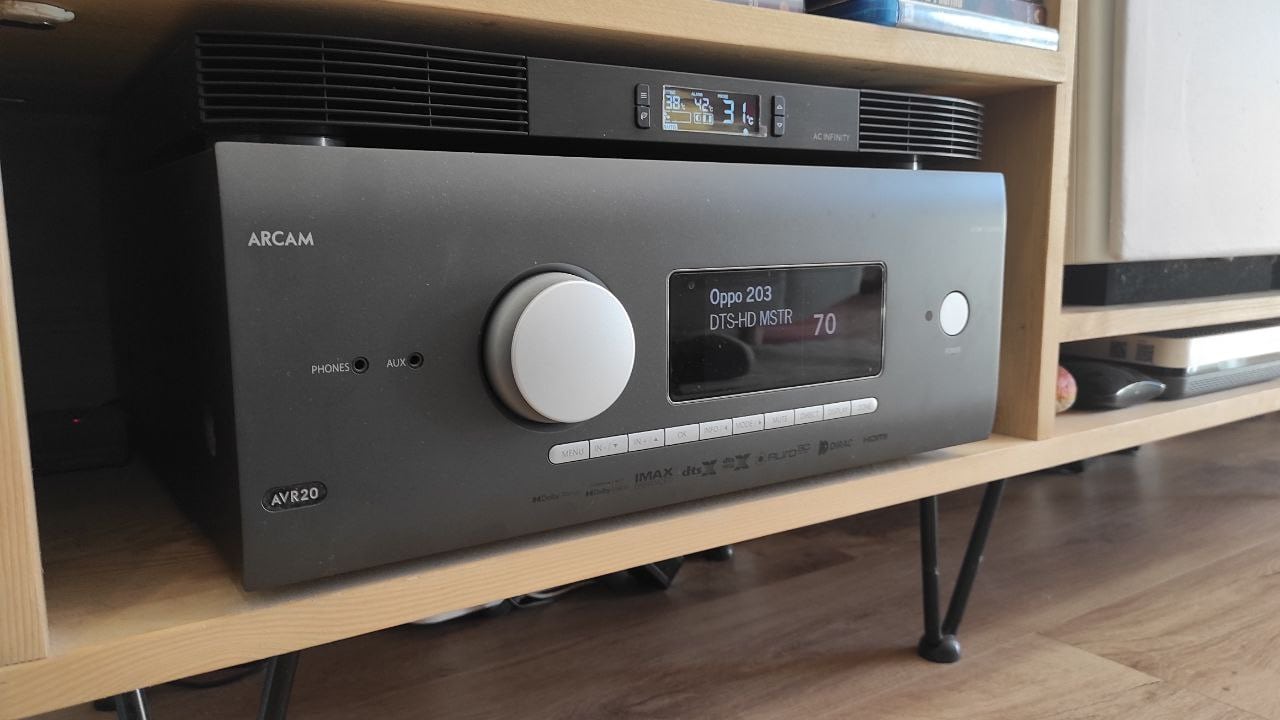
Surely if you are a movie lover you will be familiar with Arcam and also Dirac. Even Dirac Bass Control, right? Well, if this is the case, you are in luck, since we are practically facing the only AVR on the market (at a “mortal” price) that incorporates these technologies, as well as many others, as we will see throughout the analysis. Sit back and adjust that bass, let’s get started.
Arcam AVR20: Dirac Bass Control, a total success
We are before the model AVR20, which we could place as the best value for money in its range (above the AVR10, which does not have a toroidal transformer and only one subwoofer output, and the AVR30, which has more power and class G amplification). It should be remembered that all these models, including the AV40 processor, can be upgraded to HDMI 2.1 by shipping equipment to an authorized dealer. If you are thinking of purchasing one, you should also know that you can buy it already with that update and with the name of AVR21.
The AVR20 that we analyze today could perfectly be the replacement for the AVR550 model, already very old, of the British brand. In design and specifications, the changes are huge: a new back end network so that we can access the amplifier whenever we want from a PC, many more options, new DAC ESS 9026PRO, improvements in the toroidal transformer and AB amplification, support for eARC, more power… and of course: Dirac and Dirac Bass Control, the Crown jewels.
The price of the Arcam AVR20 is quite high, being found in specific offers of over 3,000 euros, although it is usual to see it above 3,600 euros. It is a high price (and more if we take into account that the Dirac Bass Control Multi Sub license, which is almost 500 euros, is not included.
Arcam AVR20: slight improvements an excellent amplification
Despite the many changes that the new HDA series presents (which is what Arcam has called this family), not much has changed in the amplification section. Like the old AVR550, the Arcam AVR20 is a 7.5″ receiver with 90 watts per channel and a similar power supply, although it adds 4 independent subwoofer outputs, something unique that is only equaled by the very expensive JBL Synthesis.
90 watts per channel is more than enough, in addition to the fact that Arcam communicates its watts in a real way, with all 7 channels at the same time (and not 2 like the rest of the manufacturers), with a really low THD (distortion + noise). If you want more power, you could opt for the top model, the AVR30identical model except that it adds another 10W more power per channel and that its amplification is the new class G (they incorporate several voltage lines that are progressively activated as the input voltage increases in order to achieve greater efficiency, giving better power output than class AB but with smaller size).
Arcam AVR20 – Classic British Design
It seems to be the norm for receivers of this type: sobriety marks British designs, whether Arcam or Cambridge Audio. The AVR20 is presented with this simplicity as a flag: a large LCD screen to manage us -although very wasted- that shows information such as the volume level, the selected input and the active surround sound codec.
Below the screen are a series of buttons that are used, among other things, to change inputs and operate menus. As we will see later, Arcam chooses not to provide this series of AVRs with an image menu (that is, we will not have a menu to navigate on the TV), everything is done from the screen. Hence the buttons on the chassis. Of course, they don’t read too well, they don’t light up and to top it all off, the serigraphs on the buttons are…in the same color as the button.
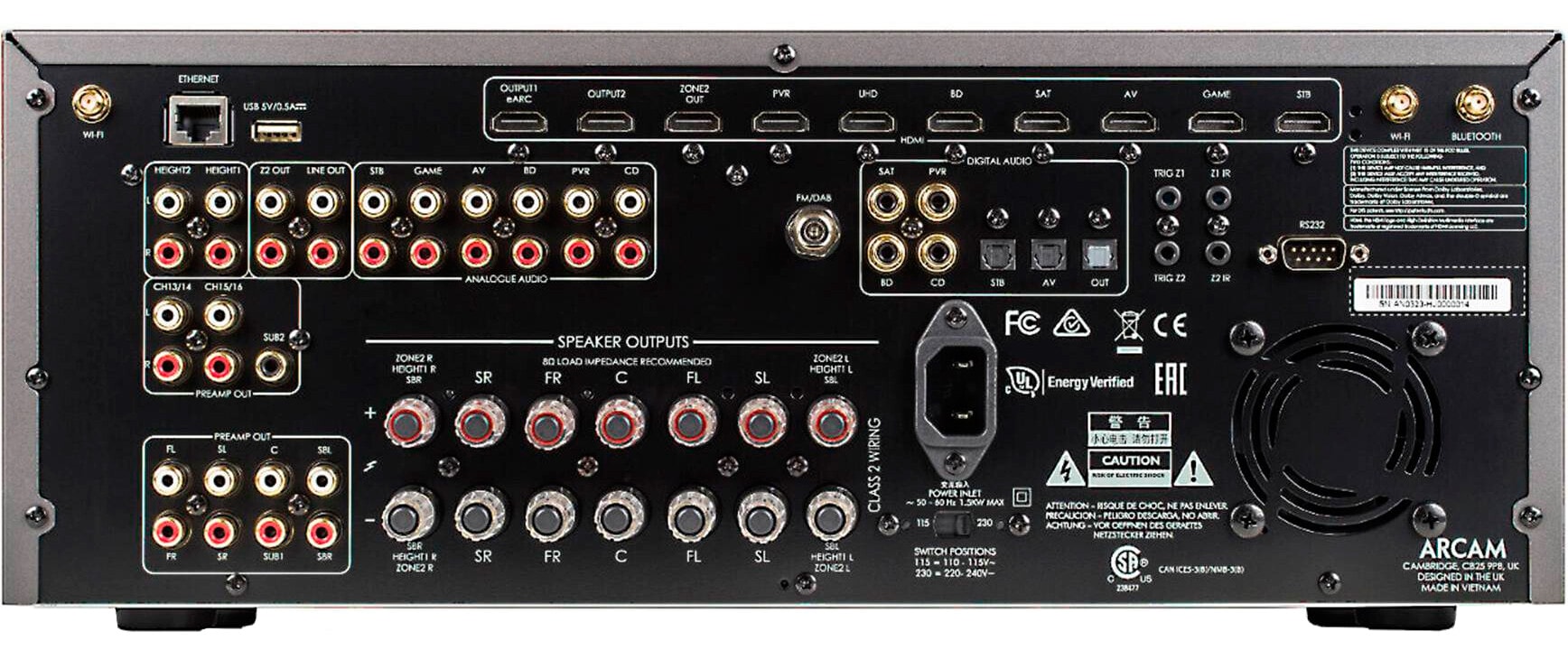
Arcam AVR20: complete but spartan navigation
The Arcam are very peculiar. As we said, one of the things that will surprise you the most is that everything is configured through the menus (or the menu but from a browser, which is the same) of the equipment itself. It is a different philosophy from the rest of the brands that indicates that Arcam is more towards the professional sector, since this type of handling is more typical of the Pro sector. The interface, by the way, is very reminiscent of the JBL Synthesis model, since it is practically a clone of this one but without the Dante connector.
In addition to the menu, you can also control the device via IP (as we said, from a browser), remote control. Anyone looking for full integration can control the receiver via RS232 as well. In addition, it can also be controlled via IR including Zone2. That can be useful to integrate it via home automation in our house.
Working through a web interface is very versatile and flexible, but perhaps too advanced for the newest user, for this reason we recommend that you read the extensive manufacturer’s manual, since the number of options it has and configurations for each thing it’s overwhelming. Now, for more advanced users it is a real blessing.
Arcam AVR20: Dirac + Bass Control = win-win
When we talk about Dirac Live we talk about a powerful equalizer that is based on correcting two fundamental aspects of sound: the frequency response -attenuating and boosting certain frequencies depending on our room- and the impulsive responsewhich helps us to see the first reflections of our room and the phase of our speakers.
The AVR20 was released plagued with bugs, most of them with Dirac as the protagonist. As of today, all or almost all bugs are completely fixed, so the software is fully usable today. And it works like a charm. Remember that the basic Dirac license is included, but the Bass Control license must be purchased separately ($169 for one subwoofer and $349 for two or more subwoofers).
Many home theater experts already know Dirac and we have made several videos and articles, but we will try to explain it again. Almost all AV receivers come with calibration software. This software, after a measurement, creates a series of filters that adjust the sound to the characteristics of the room, generally there are more problems in the bass area.
Dirac not only corrects with infinitely more precision (PEQ filters, combining FIR and IIR filters), but also allows us to see the impulse response, as well as correcting the phase automatically. Apart from that, we can do whatever we want with the software: load custom responses, equalize points to taste, etc.
Dirac Bass Control also allows us to see and interact with the crossover zone between all the speakers and the subwoofer(s), playing with the delays and phases -the system does this automatically- so that we have a completely flat response. from 20 to 20 thousand hertz, without drops. And all automatically without having to do anything by hand. A marvel.
Arcam AVR20: a total cinema sound
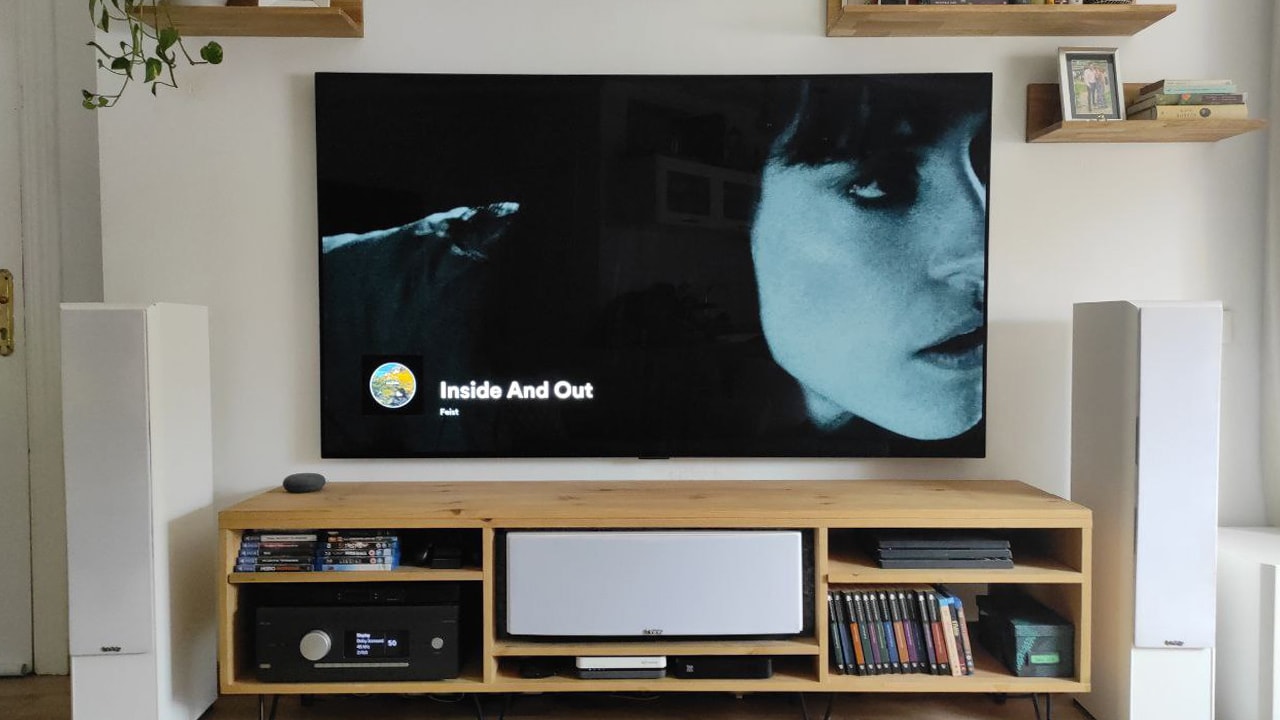
The surround and Atmos effects (if the track contains it and we have ceiling speakers) are impressive, easily hearing passing planes, gunshots, hits, etc. everywhere. In case the track does not contain Dolby Atmos, we can always activate the DSP or “emulator” of Dolby Atmos, which does a great job starting from normal audio tracks.
Dialogues are another aspect that benefits the most from good equalization: they acquire a very deep nuance from the center speaker, without sounding sibilant at any time. The cinematic experience of this AVR coupled with Dirac and the control of the bass with Dirac Bass Control is absolutely reference. The AVR20 also delivers when it comes to music playback. It’s still an AV receiver, but it has no problem delivering high-quality stereo sound.
Conclusions
We are facing one of the best premium AV receivers on the market, thanks to the combination of a solid amplification section especially Dirac and Dirac Live Bass Control. Although it came out very green in terms of firmware, the brand has been able to respond and solve all the problems that have arisen.
Aspects that we have not liked is that Tidal and Spotify Connect are still not operational, the remote control that does not match the rest of the equipment or details such as the buttons on the chassis or some other bug when it comes to detecting sound from the TV at via HDMI ARC/eARC.
However, its large AB amplification section with toroidal transformer, its large preamp section, power and especially the Dirac acoustic corrector and Bass Control, make the AVR20 the best option in the high range for those looking for the total cinema experience. Yes, at a high price.
